Tillandsia "Anita": growing and care at home
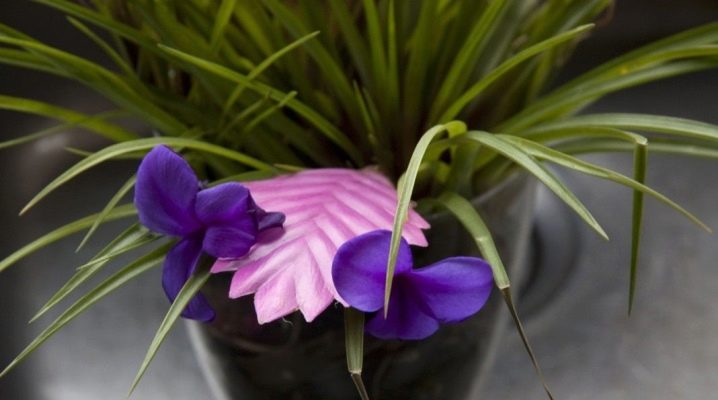
The very name of the flower - tillandsia - is puzzling to many, since this plant is not often found in florist shops. Many are afraid to buy it because they do not know how to take care of it at home. In fact, it is not that difficult. It is quite possible to grow tillandsia, the main thing is to know how to do it correctly.
Description
Tillandsia "Anita" is a type of herbaceous plants. It comes from the tropics and in natural conditions does not grow in the soil, but on trees, receiving all the necessary substances from the air, rainwater and wood itself.
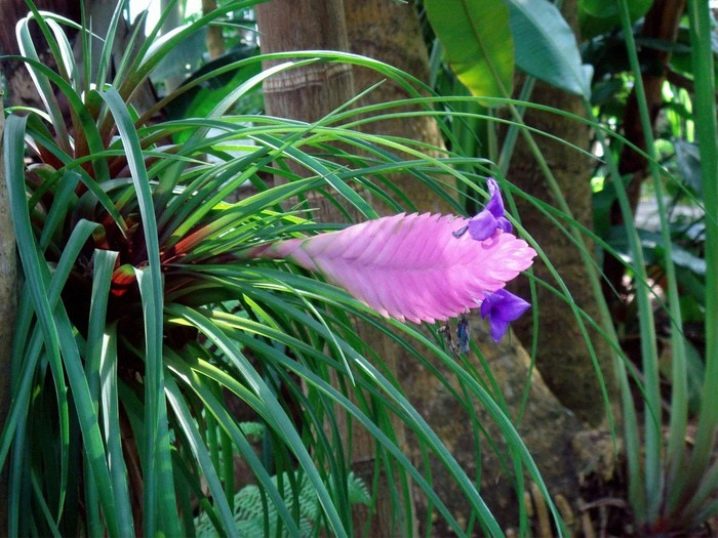
Anita is an ornamental hybrid of tillandsia cyanea. She has sharp narrow leaves covered with scales of a bright gray shade. The leaves are folded into a dense rosette, from the center of which a peduncle is thrown out once in a lifetime. It is very similar to an ear, large and somewhat flattened. Its height is from 8 to 16 centimeters, the width can reach 7.
Tillandsia bracts are lilac-pink in color, arranged alternately, overlapping each other. Flowers of a blue-blue scale, have three petals bent downwards. They bloom no longer than a day, but, blooming one after another, they form a continuous wave of flowering, which lasts up to two months.
The root system is well developed, but it grows in width, so it does not need a pot that is too deep.
Home care for this plant is generally simple, although you cannot call it unpretentious. Despite the fact that growing tillandsia is not so difficult, it cannot be called popular with Russian flower growers. The fact is that exotics (which this plant is) cause concern for many - it seems that it is difficult to grow them, that they need some special conditions, which will be problematic to create, and it will probably take a lot of time. But this is a misconception.
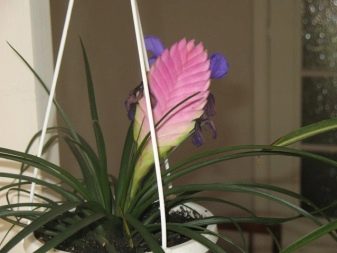
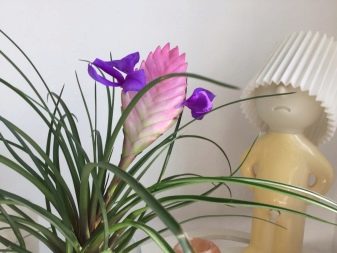
How to grow tillandsia at home
When growing this exotic two methods are applied:
- reproduction by "children";
- seed method.
The first method is much simpler, therefore it is more common. The main task is to find an adult, flowering or recently faded plant in order to take a shoot. The fact is that tillandsia blooms only once, after which it dies. But even during the flowering period, the so-called babies appear - lateral shoots, which, when they reach half the growth of the mother flower, are planted.
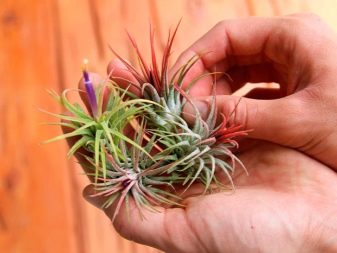
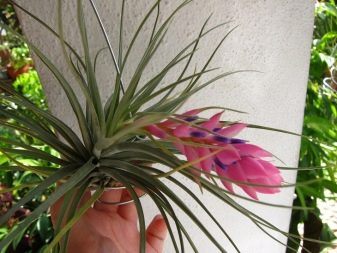
Seed propagation is a much more laborious and time-consuming process.
- A shallow but wide container is filled with a mixture of peat and sand.
- The seeds are laid out and slightly pressed into the ground.
- The soil is slightly moisturized.
- The pot is covered with a glass plate or foil to create a greenhouse effect inside.
- Until the emergence of shoots, the container is kept in a well-lit place, maintaining the temperature range within + 18-20 degrees. Tillandsia usually takes 15–20 days to germinate.
- After the appearance of two or three leaves, young plants are seated in separate pots. But don't expect it to come soon. On average, all this takes 3-4 months.
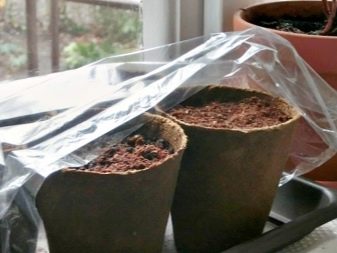
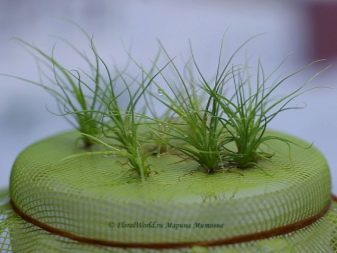
An adult plant needs a transplant only after purchase in order to change its temporary "habitat" to a permanent one. In the future, you do not need to do this - the tillandsia does not live long, a maximum of five years, therefore it is quite capable of spending this time in one pot.
When transplanting, you need to remember that the root system of this plant grows in width, and not in depth. Based on this, a pot is selected - shallow, but wide, so that the roots have enough space.
The soil also needs to be selected special. Of the ready-made options, a mixture for orchids or any other is suitable, the main thing is that it contains vermicompost. You can prepare the soil at home. This will require fertile leafy soil, peat, sphagnum moss (small pieces) and chopped pine bark. All this is taken in equal parts, mixed, crushed charcoal is added to the finished soil (a small amount).
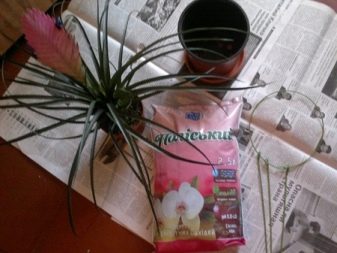

Tropicana care
This plant cannot be called undemanding, but nevertheless, caring for it is easier than it might seem. To get a healthy tillandsia that can bloom, you just need to comply with the standard requirements that it places on places and growing conditions.

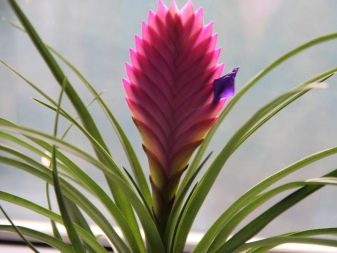
These include the following.
- Lighting. This exotic loves bright, but not direct lighting. In the spring-summer period, it is better to place it on windowsills oriented to the north. In winter, it is better to give preference to the southwest or southeast direction. It is imperative to monitor the intensity of lighting: with a lack of it, the tillandsia will turn pale, fade.
- Temperature conditions. Despite its tropical origin, Tillandsia does not like too high temperatures. In the warm season, the optimal range will be within + 22-28 degrees Celsius. The maximum possible indicator is +35 C. In winter, the plant will feel good at temperatures not lower than +18 degrees. Sharp jumps in this indicator negatively affect the flower, as well as drafts.
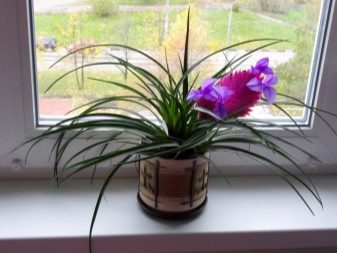
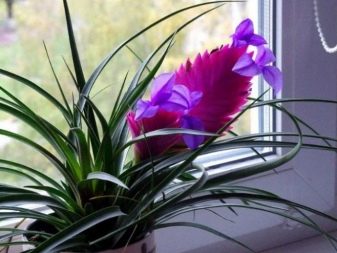
- Correct watering. In the warm season, both the soil and the rosettes of the leaves are watered, in addition, the leaves are sprayed from time to time. A technique such as immersion is often used - in order to saturate the plant with moisture, the pot is completely immersed in water. When watering outlets, you need to ensure that the water does not stagnate in them. If, after two hours, the moisture has not evaporated and has not flowed out, then it is poured out. For irrigation, soft, settled water, without any impurities, is used. It is good to use rain, frozen or boiled water. When watering, it is important to ensure that the liquid never gets on the peduncle. If the irrigation schedule was violated, the plant will signal a lack of moisture - its leaves will curl along the central-axial line.
- Air humidity level. The optimal indicator is 70-80 percent. To achieve this goal, you can spray the flower, but it is better to resort to this method. River pebbles are taken, placed in a pallet and filled with water. A pot of tillandsia is placed in this container. In winter, in addition, you need to ensure that the flower does not end up near the heating devices - this negatively affects its condition.
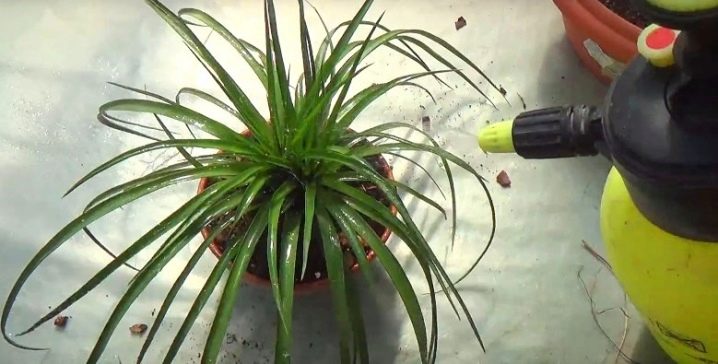
- Top dressing. This operation is performed every 10-14 days. For this, a special complex of fertilizers for orchids is used. Only you need to breed it twice as weak. You can spray the plant with the same solution. A mixture of phosphorus with potassium and nitrogen in a ratio of 2: 1: 1 will be useful. Ten grams of this mixture is dissolved in a bucket of water and used as a complex fertilizer.
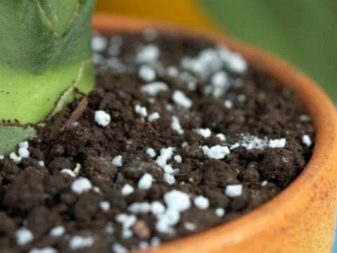
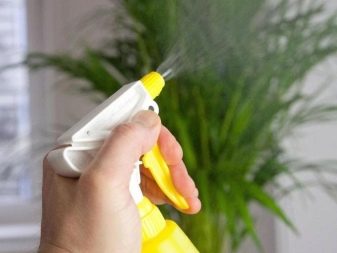
- Protection from pests and diseases. In general, tillandsia is unaffected by these two factors, but a weakened plant can get sick. Violations of the rules of care are the cause of the weakening of the flower's immunity. Waterlogging of the soil, a decrease in the moisture level below 60%, low temperatures, drafts, dry roots - all this can lead to plant disease. A mealybug may appear on it. To get rid of it, you need to wash the leaves with soapy water and treat them with an insecticide. Continue treatment until the pest disappears.If a fungus appears on the flower, it makes sense to change the soil, check the conditions of detention. The most common cause of this disease is a violation of temperature and light conditions, excessive watering, drafts. In addition to restoring the right conditions, the use of fungicides will help.
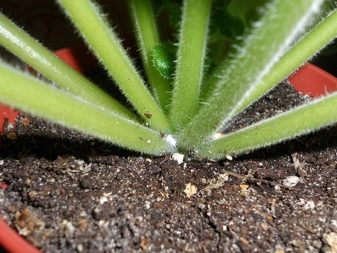
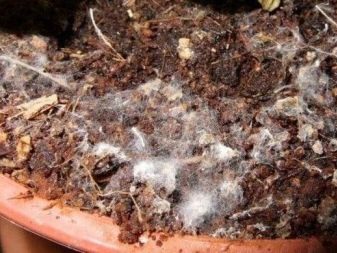
In addition to the above diseases, other adversities are possible that need to be eliminated. For example, if the stem begins to rot at the base, it is necessary to reduce the amount of water and improve drainage. "Children" do not appear - you need to additionally feed the flower. Soft, lethargic leaves - temperature rise required. The leaves are covered with gray spots - fungicide treatment is required.
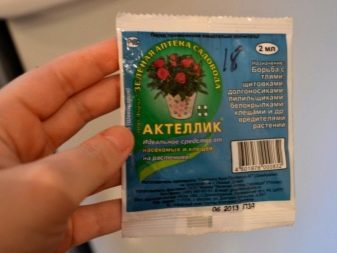
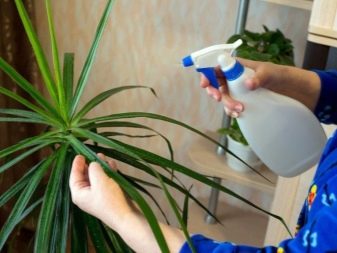
The exotic beauty of tillandsia can easily take root at home. Subject to the simple rules for growing and caring, it will delight the owners with bright unusual flowers, abundant and long flowering, a large number of "kids". Do not be afraid when, after flowering, the tillandsia begins to die off - this is a normal process, it should be so. The main thing is that she has time to release daughter shoots. Then it will be easy and simple to "continue the family" of this flower.
For information on how to care for Anita Tillandsia, see the next video.

























The comment was sent successfully.